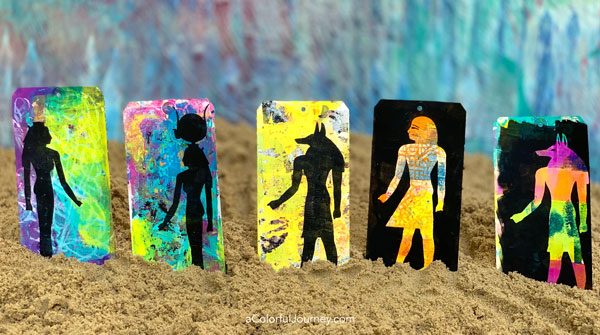
What inspired my newest stencils at StencilGirl? Egypt and my experiences there. The part where I rode a camel, and not very gracefully I might add, wasn’t the inspiration. It was the symbolism, the stories, the history, the mystery that is all throughout Egypt.
In the video, you’ll see a picture from that camel ride and what the different symbols and figures represent.
To the ancient Egyptians, the ankh represented eternal life. The symbol itself actually means the breath of life. After my visit to Egypt, I began to see the ankh as reminder to embrace the present, to fully honor that breath of life.
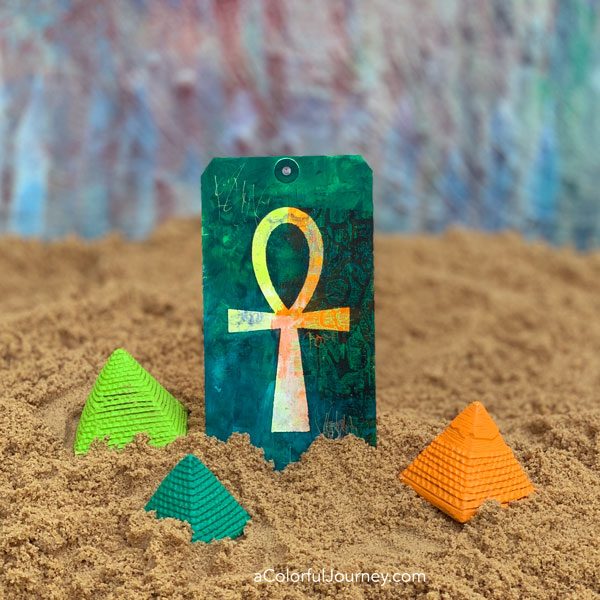

The Egyptian Ankh stencil includes an ankh mask. Both of the Ankhs in this stencil are the same size, so once you use a pair of small scissors or craft knife to detach it the Ankh mask it can be used in conjunction with the stencil version of it.
The row of ankhs makes a great border and if you repeat it, you can fill an entire page- like here on this gel print.
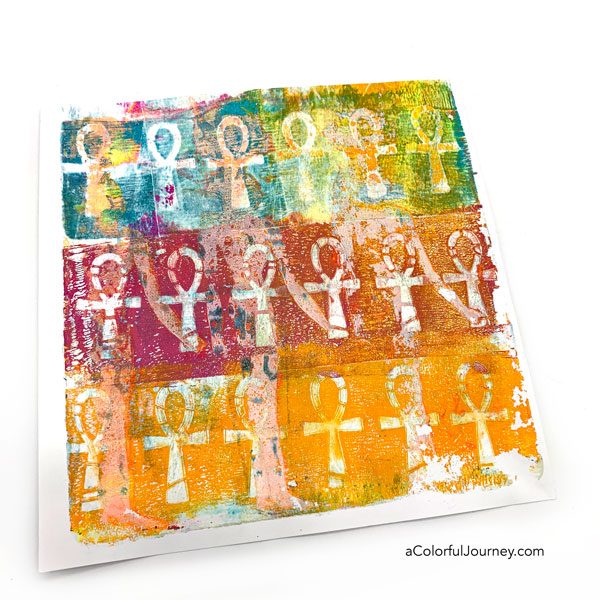
Using the mask of the ankh included with the stencil is a quick way to use your backgrounds and colorful gel prints.
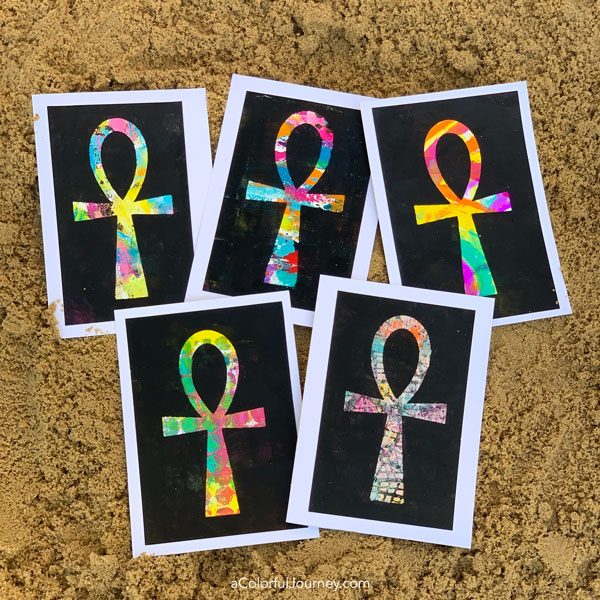
The eye of Horus/Ra represents protection, health and restoration. All things that support and work in cooperation with the Ankh.

The right eye represents the Eye of Ra (the Sun), and the left eye represents the Eye of Horus (the Moon). So does this stencil include the Eye of Horus ro the Eye of Ra?
Both! When you look at the stencil, all the eyes are facing the same way. But that’s the thing about stencils, you just flip them over and magically you have the reverse!

The Hieroglyphics stencil represents translation and understanding. After seeing the Rosetta Stone in the British Museum, I was in awe that one single stone allowed for the mysterious language of ancient Egypt to be deciphered. That one stone held the key to understanding.

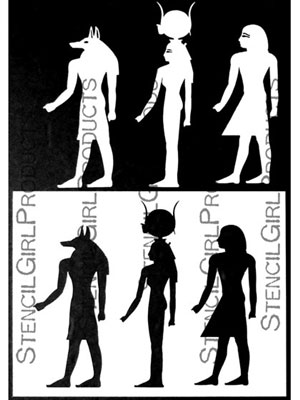
Walk Like an Egyptian includes the stencil and the 3 masks. You simply detach them with a pair of small scissors or craft knife.
Who are these 3 figures? One is Hathor, an important figure and complex Egyptian Goddess. Not only was she was a mother goddess who created and maintained all life on earth but she was also the goddess of the sky, fertility, music, joy, dance and symbolically, the mother of the pharaoh, the ruler of Egypt. A very busy woman!

Anubis, most commonly known as the god of the afterlife but he too represented more than one thing. He was the patron god of lost souls and a god of healing. He is often depicted with the color black because that color symbolized good fortune and rebirth for the ancient Egyptians. After all, the fertile soil of the Nile was black and having a plentiful growing season was vital to survival.
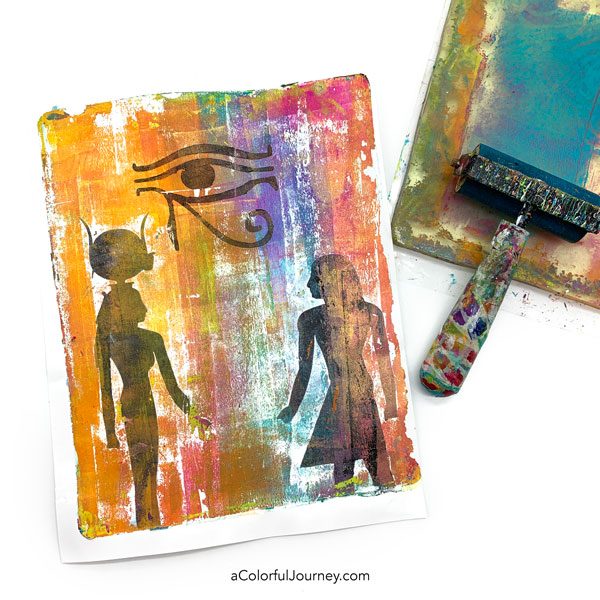
So what about the third figure? Was he a god? Nope, he was a fashion icon of the times! Men in ancient Egypt were all about wearing as much jewelry as they could afford, wore makeup, and had the coolest shape ever to a skirt.
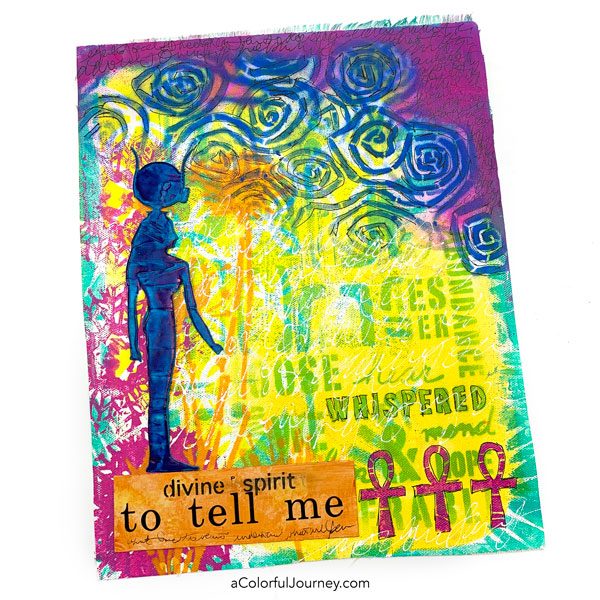
Are these the kind of colors that I expected to find when I was over in Egypt? No, they really weren’t. I expected to find only the browns of sands & stone. There was plenty of that stuff since thousands of years of sun and wind wear down anything.
But on the inside of the temples there were places where the vibrant colors that had survived thousands of years. Oh what it must have looked like when it was freshly painted!
Now you know the meaning behind my newest stencils- you can find them all at StencilGirl Products. Stay tuned because over the next couple of weeks, I’ll be sharing videos of how I used these stencils and masks!



I am in LOVE with your new stencils!!!!!!!!
My daughter will go crazy for these stencils. Hoping to see more.
I knew there was something about you I loved. I’ve been to Egypt, too and went into the Great Pyramid about 150 steps down. I did not, however, ride a camel. Loved the Sphinx and the Egyptian Museum. Love your new stencils. YIPPEE!!!!!
These are wonderful! I have always been fascinated by the ancient Egyptians and their culture. You make it fun.